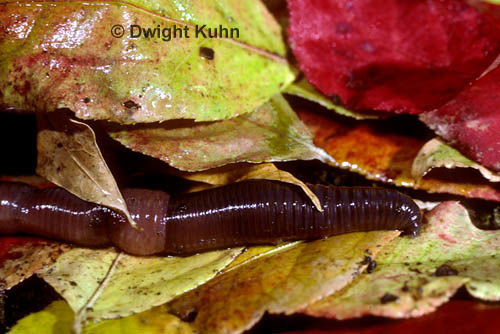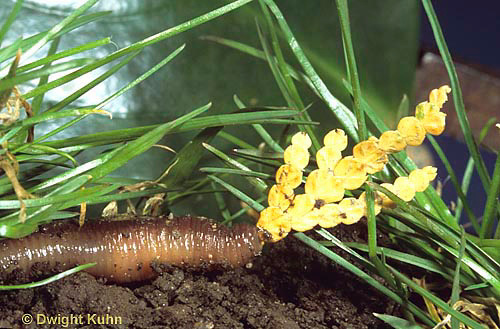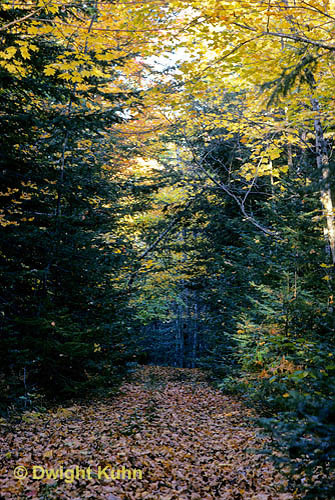Habitat

The Lumbricus
terrsteris, a species of earth worm, is primarily found in the soil
of a non-acidic ecosystem. They are located in both temperate and
terrestrial locations. Because they are detritivores, they tend to
live in areas were leaf litter is plentiful, so that they can
decompose the vegetative matter. They tend to move in soil with high
carbon concentrations as well. They are key ecological engineers, in
the fact that they essentially mix soil (Griffith et. al
2013). According to Bey et. al, 2013, earthworms are
constantly effecting their terrestrial ecosystems by, aiding in
diffrent chemical, biological and physical soil processes. Some of
the physical processes include making casts and burrows, which
in turn the will make up the key soil properties in the area by
transfering water and other elements. This is also known ass
aggregation. What this means is that earthworms themselves
contribute to the health and makeup of the soil in their
environments, which in turn effects the plant life around the
Lumbricus terrestris. (Bey et. al 2013).
Earthworms move through the soil and consume carbon rich soil and
plant matter and then egest (or expel as waste) these processed
materials, plant and soil residues, as they push through the soil.
This is known as a cast and leads to the formation of an aggregate.
An aggregate is, according to Yasemin Kavdir, 2011, in the book
Biology
of Earthworms, made by combining bits of clay, silt, and
sand with organic and inorganic substances found in the soil. Soil aggregates
in turn can make up the soil structure in a particular area by
binding with various chemicals produced by plants and other
chemicals found naturally in the soil. Worms carry decaying matter
to the burrows, their permanent residence. They excrete much of the
soil and plant residue around their home, making the burrow area a
spot with a high concentration of plant nutrients. This makes a good
spot for plants to place their roots. Worms can also effect the soil
physically, by creating large pores to decrease the soil density.
This allows the soil to have gasses, air, and water flow. All these
factors together are the environment that the earth worm lives in,
and that the earthworm contributes to (Karaca 2011).
 While Earthworms have been shown to have some benefits to the
ecosystem, there is evidence that they may be doing harm as well.
According to a study done by Brad Griffith, 2013, L. terrestris,
has recently been showing evidence of herbivore activity in this
species. There is video evidence of the earthworm not only attacking
the seeds and seedlings of plants, but also evidence of the worms
attacking the leaves of the plants as well. It is not exactly known
if the worms are directly digesting the leaves or if they are
bringing the leaf bits back to their burrows to decompose the plant
there. The conclusion of this experiment is
that the herbivore activity, Depends on the amount of leaf litter
available and the time of the year. This means that when the litter availability is low,
the earthworms resort more to these respective activities (Griffith et al 2013).
While Earthworms have been shown to have some benefits to the
ecosystem, there is evidence that they may be doing harm as well.
According to a study done by Brad Griffith, 2013, L. terrestris,
has recently been showing evidence of herbivore activity in this
species. There is video evidence of the earthworm not only attacking
the seeds and seedlings of plants, but also evidence of the worms
attacking the leaves of the plants as well. It is not exactly known
if the worms are directly digesting the leaves or if they are
bringing the leaf bits back to their burrows to decompose the plant
there. The conclusion of this experiment is
that the herbivore activity, Depends on the amount of leaf litter
available and the time of the year. This means that when the litter availability is low,
the earthworms resort more to these respective activities (Griffith et al 2013).
Another study by Jean-David Moore, 2013, suggests that through tests, the
Lumbricus terrestris has proven the capability of being able to
invade “limed forests". These would include “limed sugar maple
stands in southern Quebec and those on richer soils in Ontario”, and
the northern hardwood forests of the USA and Canda, where the
studies where done. This is linked with human activity. The
more humans disrupt forests, the more lime the soil will contain,
making these areas susceptible to the invasion of this species of
earthworms. Earthworms also have shown evidence of being able to
tolerate the cold in the northern hardwood forests, making them
better adapted to this area, and more likely to live there, if an
invasion were to occur. The earthworms moving to these areas, would
change the ecosystems in both positive and negative manners. They
would change the soil composition for the better, allowing plants to
grow, but would also possibly display their herbivore manner, and
destroy some of the plant life in this area (Moore et al.
2013).
Learn a little
more about the soil they live in by moving onto our
Soil Structure page!
Check out where we gathered our information
from on our
Reference page
Home